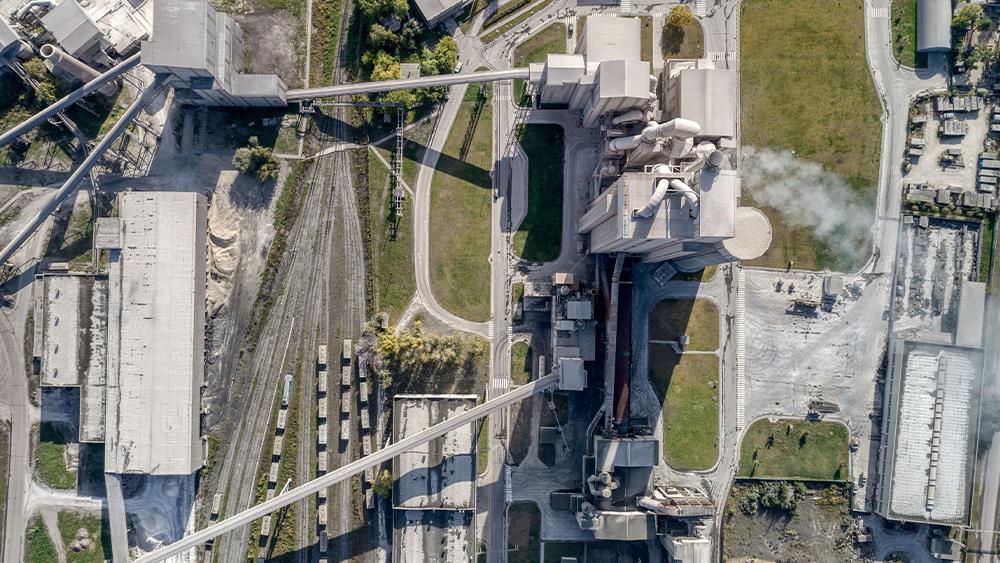

Lime producers have come together to launch a plan to accelerate decarbonisation of the industry and deliver ‘net negative’ carbon emissions by 2040.
Spearheaded by the industry’s trade body MPA Lime, the Net Negative 2040 Roadmap explains how the sector can go beyond net zero a decade ahead of the UK’s overall 2050 target by deploying technologies, such as fuel switching and carbon capture, as well as recognition of lime’s natural carbon-absorbing properties.
The sector’s two main products – high calcium quicklime and dolomitic lime (dolime) – are extremely versatile and vital to numerous everyday essentials from the manufacture of metals, glass, plastics, and building materials to the purification of drinking water, treatment of sewage, control of air pollution, animal welfare, and production of many food staples including eggs, sugar and dairy products.
Used around the world for millennia, lime is made by heating quarried limestone or chalk to above 900 degrees centigrade to trigger a chemical reaction known as calcination. Around two thirds of the industry’s carbon dioxide emissions arise from calcination, with most of the remainder resulting from fuel combustion.
Since 2005, action and investment in the best available technology by British lime producers has already resulted in a reduction in absolute carbon emissions of around 25%.
Now, the industry’s net negative roadmap identifies further technologies and infrastructure to fully decarbonise British lime production, as well as outlining the actions required by government and other industries in the supply chain.
In addition, researchby the European Lime Association confirms that around one third of the carbon dioxide from lime production is naturally reabsorbed from the atmosphere back into lime products – a process known as carbonation – but this is yet to be recognised in carbon accounting methodologies.
Combining the industry proposed developments with the enabling action by government and the natural effects of carbonation, means the production of British lime could become net negative by 2040, and make a positive and ongoing contribution to addressing climate change.
Richard Stansfield, Chair of the MPA Lime management committee, said: “The British lime and dolime industry has already achieved remarkable progress in both business commitment and tangible actions to decarbonise and play its part in tackling climate change.
“The publication of our Net Negative 2040 Roadmap is a milestone on the journey and serves to communicate, as well as incentivise, the changes that are essential for the future.
“The pace of change must accelerate and we are jointly committed to ensuring that it does. Importantly, we can’t achieve this alone. Reaching and exceeding net zero will also require some key enabling action by Government and others.”
The MPA Lime Net Negative 2040 Roadmap shows how lime production could be decarbonised by 2040 through the deployment of five key levers:
Mike Haynes, Director of MPA Lime, said: “Each lever will contribute to decarbonisation – many initiatives are happening already or will come on stream this decade – and in combination they will deliver a dramatic carbon reduction to reach zero by 2040.
“In addition, the combination of using biomass fuels with carbon capture and lime product carbonation will result in removal of 250,000 tonnes of atmospheric carbon dioxide every year, making the sector net negative overall.
“Other levers, especially indirect emissions and transportation, require broader collaboration and enabling action by Government and other industries.”
Ruth Herbert, Chief Executive of The Carbon Capture & Storage Association said: “It’s fantastic to see such a vital industry as lime setting out its own net zero roadmap.
“The roadmap is clear that there is no option to decarbonise the lime industry without the installation of carbon capture utilisation and storage (CCUS).
“It’s clear that demand for CCUS from UK industries is very high – with this roadmap alone planning for all 5 sites to access CCUS clusters by 2038.
“This reinforces our message to the government that they need to urgently set out a national deployment plan for CCUS, indicating how and when sites like these can have access to CO2 infrastructure.”
Examples of enabling action by government and other industries in the supply chain include:
Haynes concluded: “Getting this enabling action right will allow the British lime industry to provide the whole of the UK and beyond, with net zero products that are essential to our everyday lives whilst removing more carbon dioxide from the atmosphere than it emits.
“The British lime industry is committed to addressing the challenges of climate change and we now have a credible roadmap to get us there.”